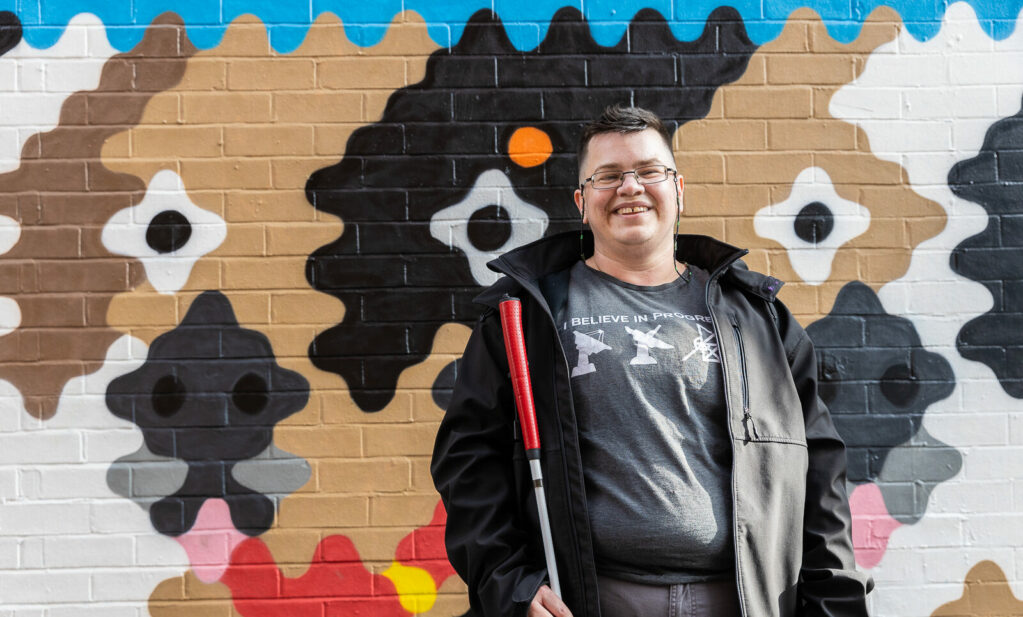The art of activism: why creative practices are important for disabled campaigners
Anahita Harding
Artist and activistThe artist, activist, and designer of some of Transport for All's most iconic protest placards - Anahita Harding - writes about using art to make change.
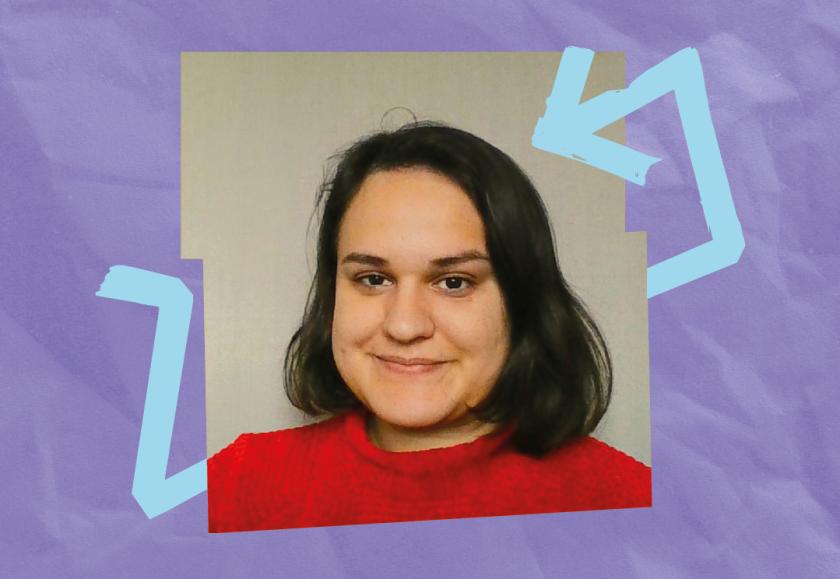
Anahita Harding is an artist and full-time wheelchair user, who has been an active member of Transport for All and Disabled People Against Cuts (DPAC) since 2012. In 2019, she was shortlisted for the Turner Contemporary commission and the Katherine Araniello bursary award. Three years later she performed “Are You Comfortable Yet?” at the Tate Modern as a part of We Are Invisible We Are Visible (WAIWAV).
I became involved with Transport for All around the age of 20 through Lianna Etkind, who was the Campaigns and Outreach Coordinator at the time, in 2012. When we started chatting, we eventually came to the subject of inaccessible transport.
This is an issue I have had experience with my whole life. Although I’d seen some promising changes, such as the scrapping of the Routemaster buses in London, I was still confronted by negative attitudes from drivers, with other access barriers always lurking around every corner. I was frustrated, and this frustration increasingly came through in my art practice at university, which had an activist angle – I wanted my art to be my voice.
I think art in activism is extremely important, in part because it’s where the creative ideas stem from – for example, when planning a protest what form would that take? What theme would it have? What would make it eye catching or noticeable for those previously unaware of the cause you are protesting for? I think in my work I try to make my art have a message, a purpose – I want it to be useful and bring about change. Art gives activists alternative ways to talk about our lived experience, and communicate the barriers disabled people face in powerful new ways.
I think art is important for all activists, disabled and non-disabled, but as disabled activists we already have to think outside the box in order to survive. Art therefore can have particular significance for our community, because if you are unable to leave your home, or unable to participate in a protest or action in person, you can use your art to carry your voice forwards, and spread your message in different and equally impactful ways. Online art can be shared to thousands of people without you even leaving the house. It allows disabled activists to have our say, and reaching wide audiences that might otherwise be inaccessible to us.
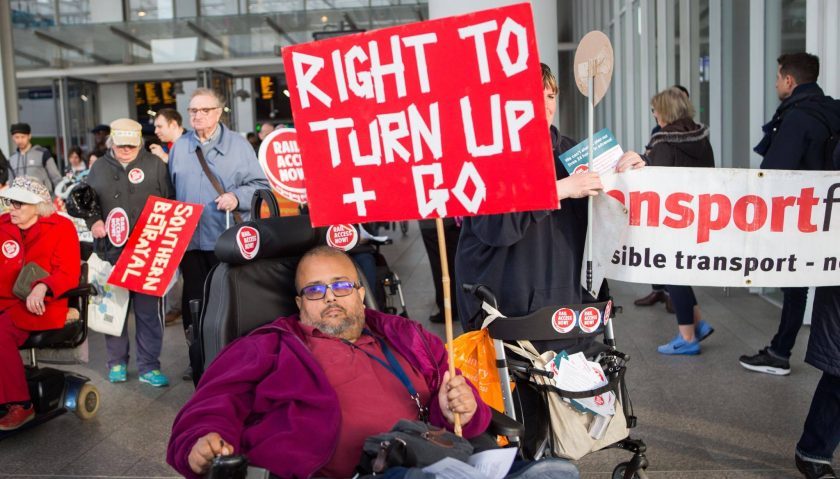
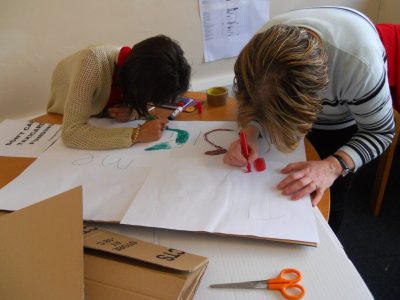
It can also be an opportunity for community building. Art gives disabled activists a platform to share with other people that have creative interests, meeting on common ground whilst voicing their view on important issues that affect them. Collaborative approaches such as placard making workshops, whether in person or over Zoom, allow fellow activists to meet, listen, share, and learn from each other through the creative process.
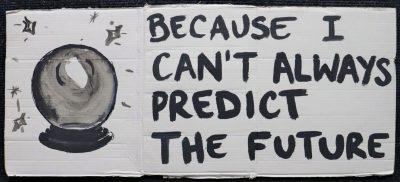
Something you see a lot in the art of disabled activists is a punky, DIY spirit. Our community face extraordinary financial barriers, and when you don’t have a lot of money to spend on expensive materials, you have to get crafty. Many of my placards were made from cardboard boxes, and used tape to create the letters. At a protest to defend Turn Up and Go, one of my placards had a crystal ball on it, and said “because we can’t predict the future”, to showcase why it is not reasonable to expect disabled people to book every journey we need to make 48 hours in advance!
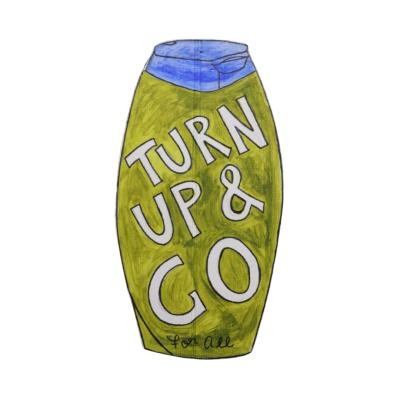
Another placard was based on the shampoo bottle called ‘Wash and go’, which I turned into a slogan called ‘Turn up and Go’ to bring a sense of humour through in our message. I think humour is a really important part of activist art, and is a feature of some of the work I most admire. The comics of Dave Lupton, aka Crippen, are a particularly brilliant example. They look at the very serious issues that disabled people face, but with a streak of dark and defiant humour that drives the message home.
In terms of my own work, one of the things I am particularly proud of is a performance I did in 2023 called STEPS. In the performance, I used my upper body strength to manoeuvre my way up and down 311 steps at the Monument to the Great Fire of London to demonstrate the difficulty disabled people face evacuating buildings in the event of a fire. The event was supported by CLADDAG, and was picked up by the BBC.
I’m excited to see what the future holds for activist art, and how new technologies might change the way disabled activists create and share our experiences and, through changing the way we see the world, help to change the world itself.

